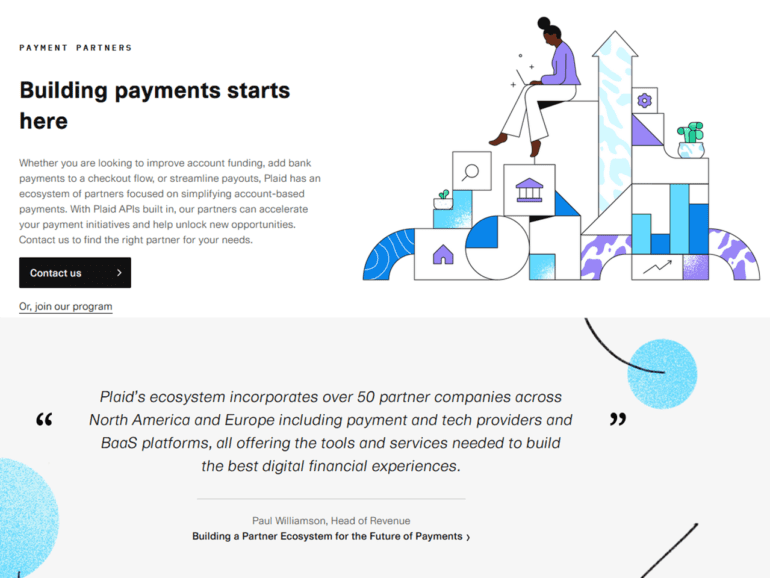Thursday, Plaid launched what they called a “payment partner ecosystem,” a network of companies that will be using a Plaid-enabled “pay with bank” option at checkout.
It is the open banking giant’s first move into the payments space, less than a year after the Justice Department killed the Visa/Plaid merger.
Instead of joining a major payments provider, Plaid aims to disrupt the Visa, Mastercard, and Amex payment empire. Partners like Square, Dwolla, and new arrivals to the Plaid ecosystem Checkout.com and Marqeta are members of the new program, building payment capabilities for the new age of fintech.
“We’re entering a new world where people hold bigger balances in fintech apps, and paying by digital wallets is the norm. In 2020, global use of mobile wallets exceeded cash for the first time for in-store payments,” Plaid Head of revenue and partnerships Paul Williamson wrote in a blog post.
“Plaid wants to help any company, no matter their size, industry, or technological capability, harness the account-to-account payment opportunity while decreasing risk for the ecosystem.”
To do this, Williamson said Plaid is launching an ecosystem of payments partners.
Payment partner ecosystem
The idea is to bypass credit cards altogether and enable customers and businesses to transact through direct bank transfers, avoiding the fees of traditional credit. Plaid connects 11,000 institutions by enabling virtually every type of digital transaction, and adding direct payments is a logical, lucrative next step.
Plaid is betting big — but their data shows it’s a winning hand. A July 4,000 person survey found that 48% of people in the UK and US use fintech daily, and 70%-79% use fintech for banking and payments.
They are banking on the $503 billion mobile payments market of 2020, and their release cited a hopeful analysis that put the global mobile payments economy at more than $2.3 trillion in 2023

Just the rumor that Plaid might start enabling payments convinced lawmakers to call off a $5.3-billion merger deal back in January, worried Visa was only trying to take down the competition before it was too late.
Now, Plaid could lead the charge of fintechs against the more traditional card and credit companies.
How does Plaid’s open banking work anyway? It encrypts user bank account data to connect users to apps like Robinhood, Venmo, and Coinbase.
For example, in the myth of Pyramus and Thisbe, two Babylonian lovers whispered through a wall: If customers are Pyramus trying to talk to fintech Thisbe, Plaid would be the hole in the wall.
With a growing partner ecosystem, those connections expand more to e-commerce checkout or even buy now pay later.
“Many of the fastest-growing fintechs globally are powered by Plaid and Checkout.com’s best-in-class APIs. Our partnership will connect Plaid’s account verification and Checkout.com’s payment services to make account funding accessible, seamless, and secure for fintechs and merchants alike,” Tracy Meng, VP of Partnerships at Checkout.com. said.
“This is just the beginning of our shared journey to unlock the future of embedded finance.”


